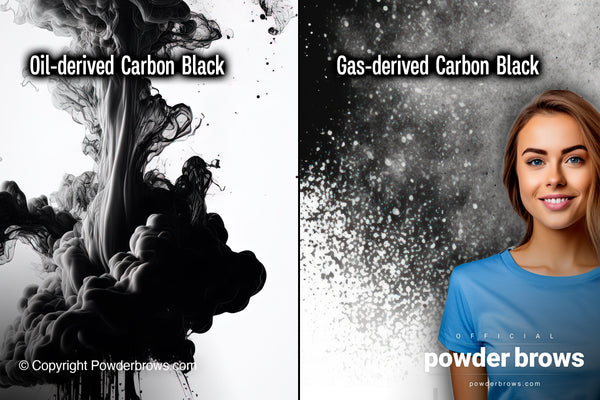5. The Organic Nature of Hydrocarbons
Hydrocarbons are considered "organic" because they are carbon atoms bonded to hydrogen atoms. These are the defining traits of organic chemistry, focusing primarily on carbon-hydrogen compounds. In this sense, only "hydrocarbon" fits the organic definition because of the presence of carbon-hydrogen (C-H) bonds.
Channel Black: A Hybrid of Organic and Inorganic Components
In the case of Channel Black, 19% of the composition is organic, and 81% is inorganic. As we can see, that does not mean that other components were making this up - it is still carbon! The difference lies just in the production method and, therefore, the forms of bonds.
The organic portion comes from aromatic hydrocarbons, which are complex carbon-hydrogen compounds. These hydrocarbons fall under the organic category. The remaining 81%, being elemental carbon in its free state, is considered inorganic. These components make Channel Black a hybrid pigment containing both organic and inorganic elements.
Furnace Black: Another "Hybrid" Example
Furnace Black consists of 55% organic hydrocarbons and 45% elemental carbon. Similar to Channel Black, the organic part is due to the presence of aromatic hydrocarbons, while the inorganic portion is pure elemental carbon. The balance of these two components affects the pigment's characteristics, like particle size and color intensity.
Many producers of Furnace Black refer to this as “purely organic” for marketing purposes. However, although it has the highest portion of “hydrocarbon,” it is still a mixture of elemental carbons and hydrocarbons with a considerable portion of elemental carbon in it.
Thermal Black: Why it's Predominantly Inorganic?
Thermal Black consists of 99% elemental carbon, making it highly inorganic. It contains a minuscule 1% of organic components. The dominant presence of elemental carbon classifies it as inorganic despite its particle size, which may cause it to behave similarly to organic pigments in some applications.
Observations Regarding the Powder Brows Procedure
When it comes to choosing a pigment for the powder brows procedure, thermal black (Black 7) stands out as the safest option among the three types. With its larger particle size, thermal black poses fewer risks of migrating through capillaries or sinking too deeply into the skin. When applied to the skin, these larger particles also impart a brownish undertone, making thermal black suitable for powdering and microblading techniques. Over time, the color remains relatively stable, fading into an anthracite shade. Additionally, its lower opacity ensures that it won't dominate the visual field, and its reflective quality gives the skin's powdered areas a brownish appearance.












